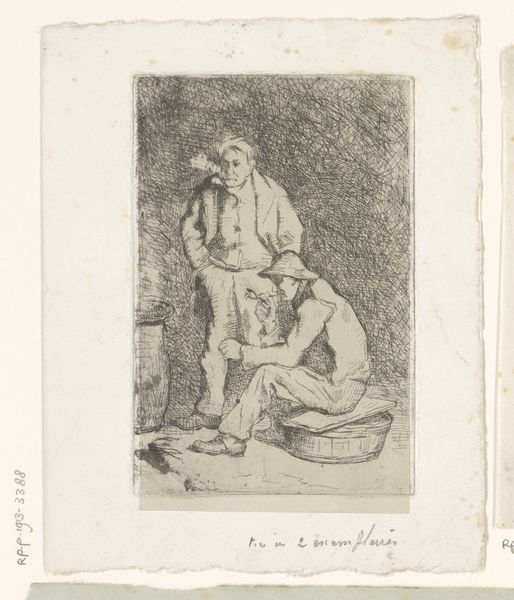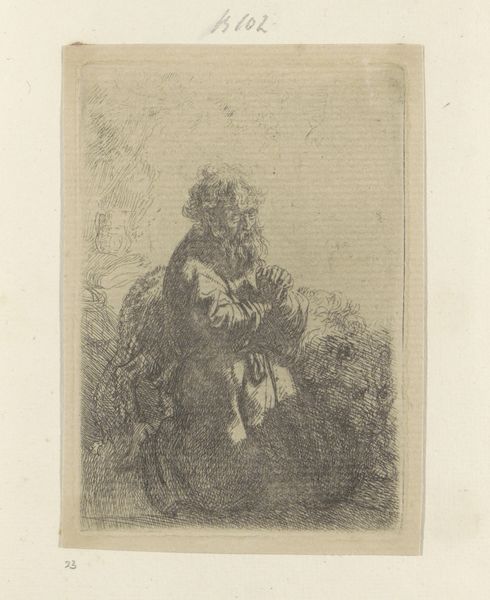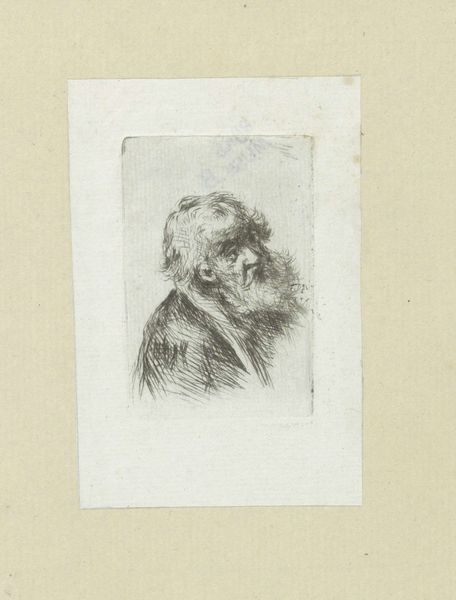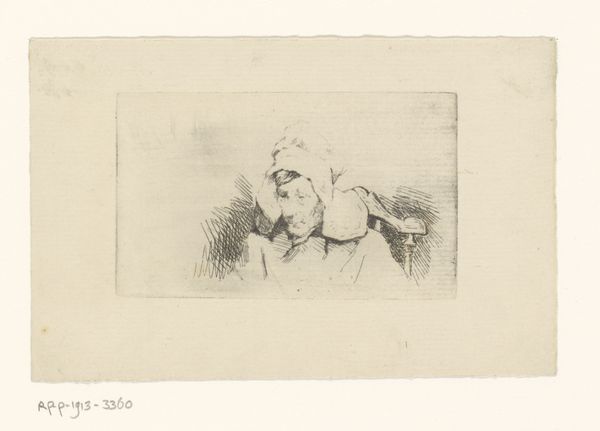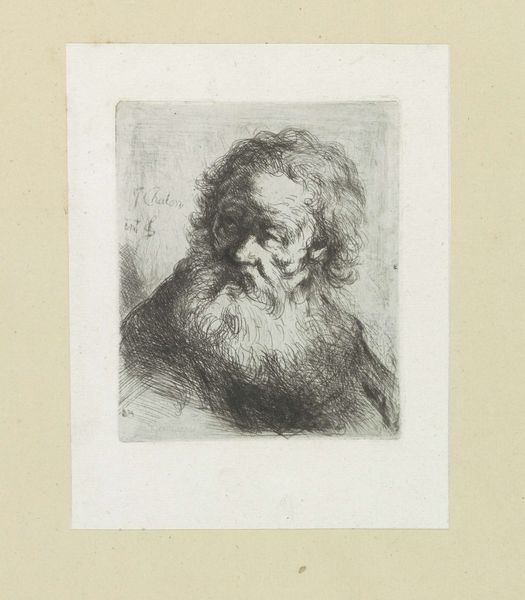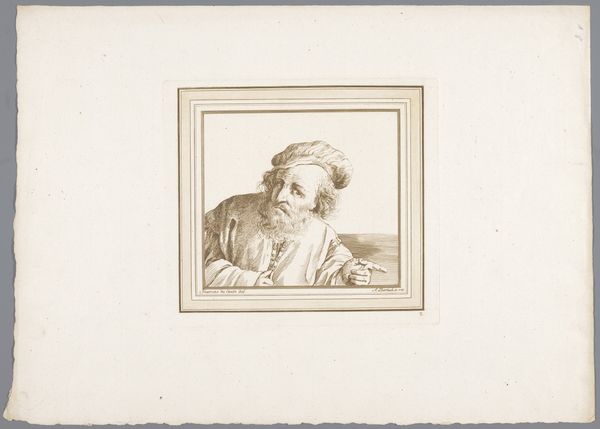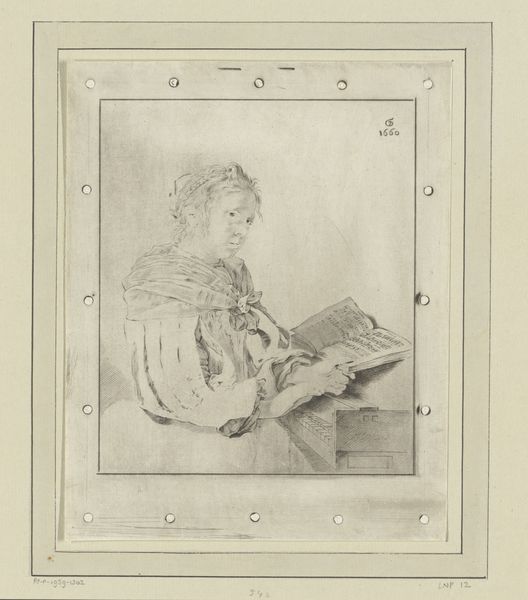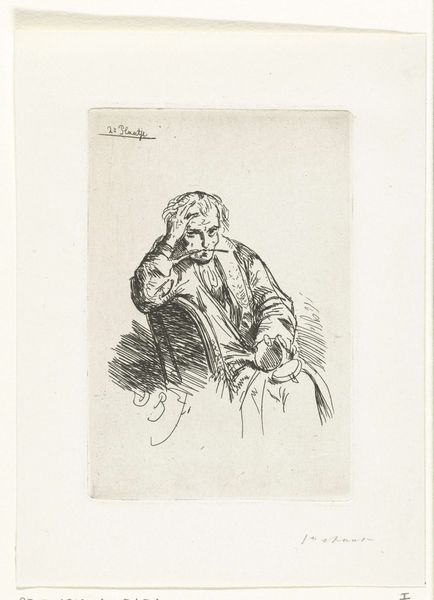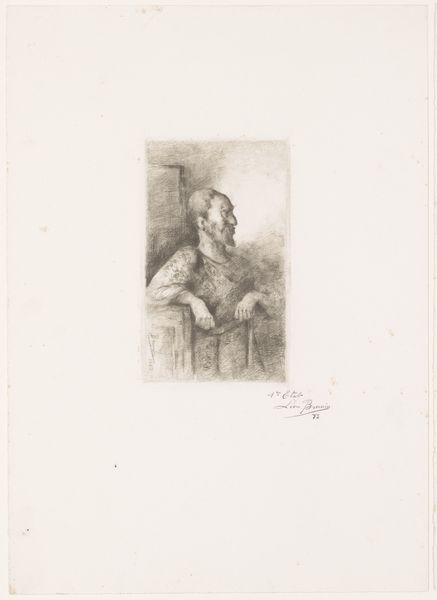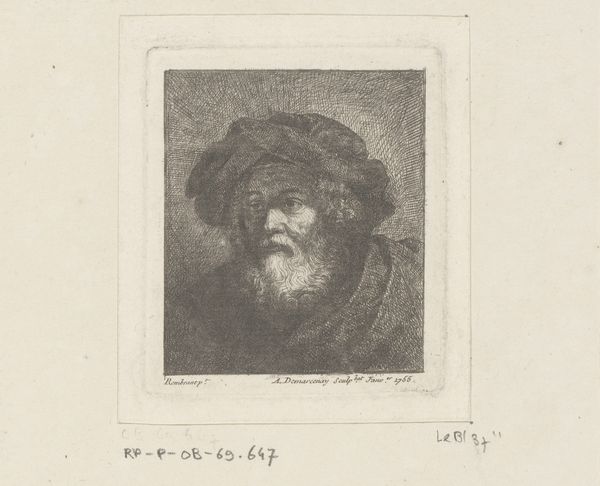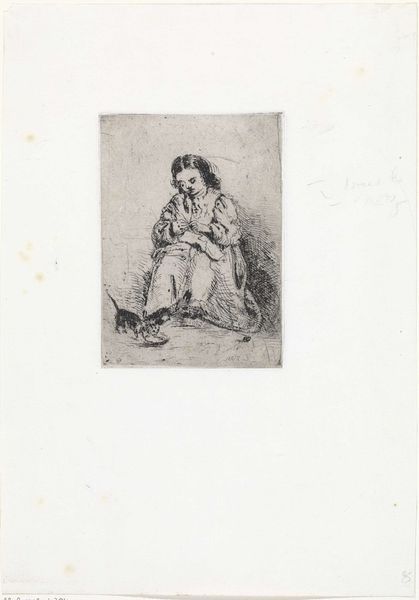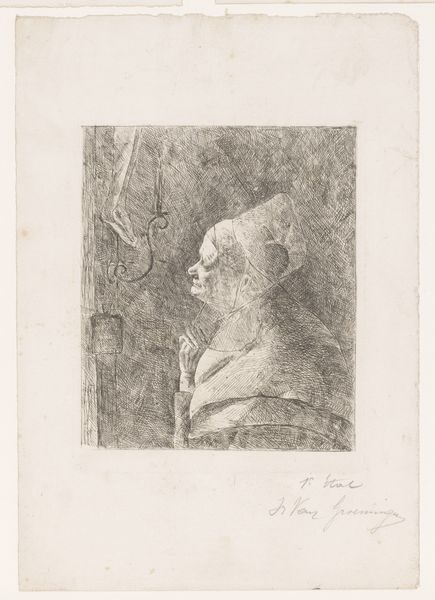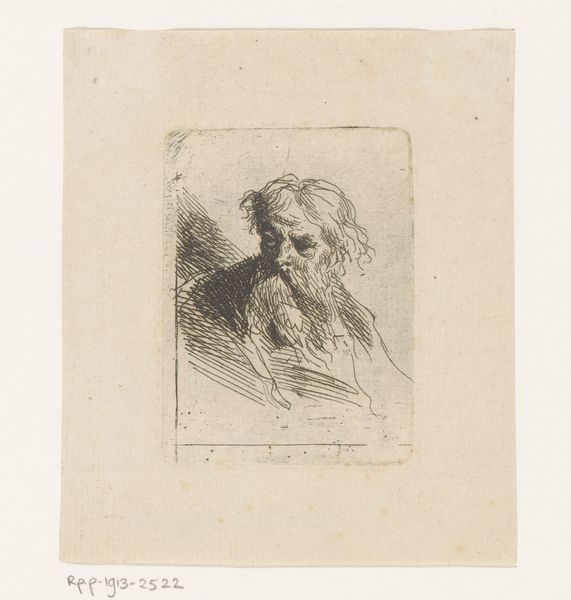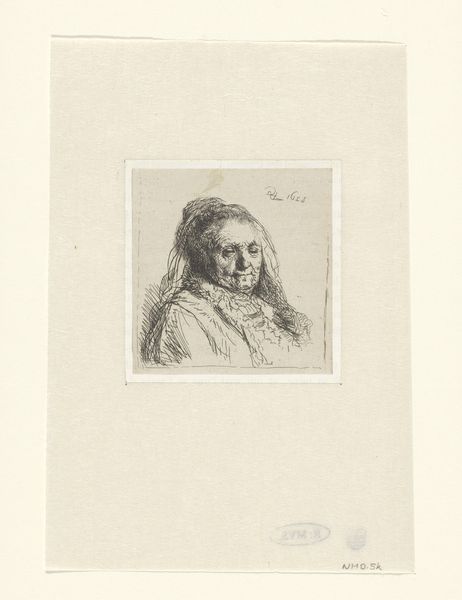
print, etching
#
portrait
#
pencil drawn
#
aged paper
#
toned paper
#
light pencil work
#
baroque
# print
#
etching
#
pencil sketch
#
old engraving style
#
personal sketchbook
#
sketchbook drawing
#
pencil work
#
genre-painting
#
history-painting
#
sketchbook art
Dimensions: height 85 mm, width 73 mm
Copyright: Rijks Museum: Open Domain
Editor: Here we have "Oude man met een klaverblad op zijn jas," or "Old Man with a Cloverleaf on His Coat," an etching potentially dating from as early as 1626, and possibly created by Ferdinand Bol. I find the subject matter so intriguing: there's an incredible intimacy captured here. What can you tell us about it? Curator: This piece raises crucial questions about representation and social power during the Dutch Golden Age. Consider who was typically immortalized in portraits, right? This etching presents us with an elderly man, seemingly of modest means. What narratives were excluded by the dominant artistic trends of the time? Who wasn’t deemed worthy of representation and why? Editor: So, it’s almost subversive in a way? Curator: Exactly! Think about the cloverleaf – what does it symbolize? Is it a signifier of luck, or is there perhaps a connection to popular medicinal practices? Consider how marginalized communities might have utilized folk traditions. Can this portrait be viewed as a form of resistance against the established order? Editor: That makes me wonder if it was even intended for public consumption or created in someone's personal sketchbook. Curator: Precisely! Perhaps a radical artistic exercise? What happens when we shift our gaze to include the unseen, the unheard, the unrepresented? Editor: This has definitely changed how I see portraits and what stories they can tell! Curator: Art can unveil hidden histories, invite crucial dialogue, and ultimately help to dismantle oppressive structures.
Comments
No comments
Be the first to comment and join the conversation on the ultimate creative platform.
